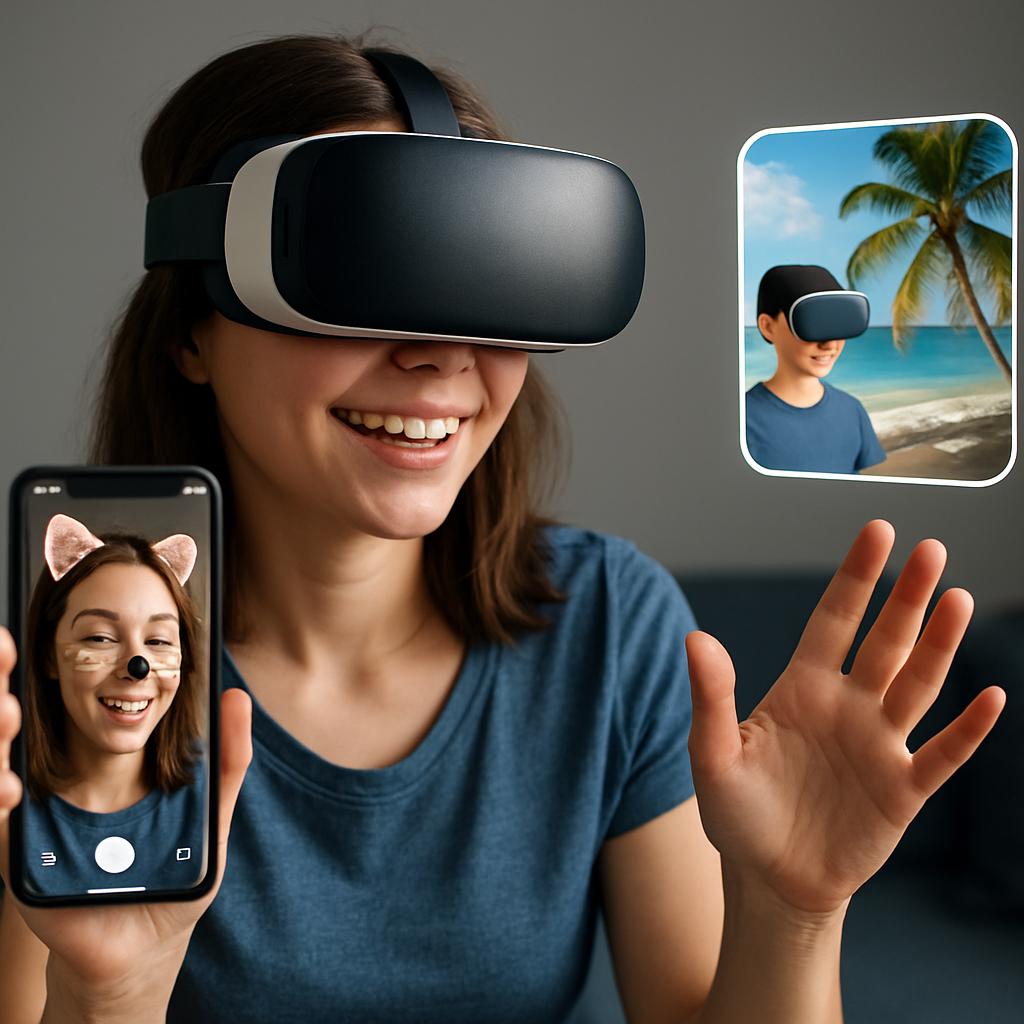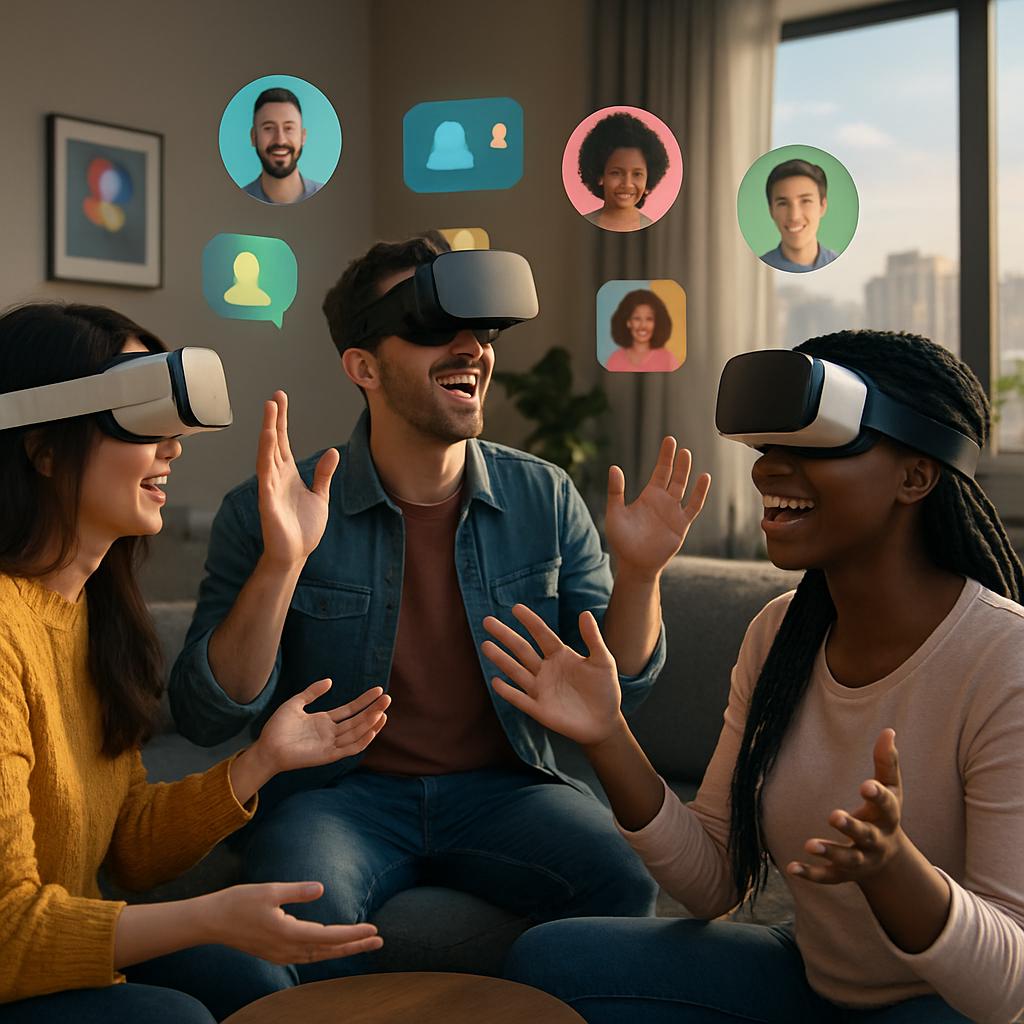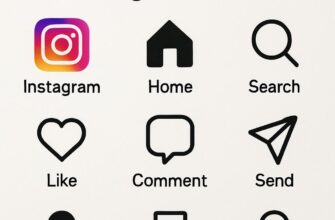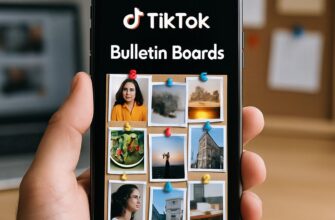Brands used to chase attention with polished ads and carefully scheduled posts. Today, attention is no longer enough; presence matters — the sense that a consumer is not just looking at a product but interacting with it. Augmented Reality (AR) and Virtual Reality (VR) in social media: how immersive experiences are changing brand outreach captures that shift from passive exposure to active participation, and it’s reshaping marketing playbooks across industries.
- The rise of immersive features on social platforms
- How AR filters reshaped user engagement
- VR social spaces: presence over passive viewing
- What this means for brand strategy
- Practical campaign formats that convert
- Measuring success: the right metrics for immersive campaigns
- Challenges and ethical considerations
- Tools, budgets, and production realities
- Real-world examples and lessons learned
- Preparing for the future: trends to watch
- How to get started this quarter
The rise of immersive features on social platforms
Platforms that were once about timelines and thumbnails now promote experiences. Snap and Instagram popularized face filters and world lenses, turning playful overlays into daily habits. Those small interactions taught businesses a crucial lesson: when people co-create content with a brand, they amplify it organically.
At the same time, social platforms have invested in spatial tools and persistent virtual spaces. The technology behind these features has matured — better tracking, faster rendering, and more accessible development kits — making immersive elements less of an experiment and more of a core channel. That infrastructure invites marketers to rethink campaigns not as one-way pushes but as environments people enter.
How AR filters reshaped user engagement

AR filters are deceptively simple: a virtual object layered over a camera feed. Their power comes from immediacy. A shopper trying on sunglasses with their phone is emotionally closer to purchase than someone watching a static image, because trial reduces uncertainty and the brain begins to own the product.
Beyond convenience, AR filters make content social. Users post themselves wearing a brand’s lens, turning peers into endorsers. This creates a low-cost, high-trust amplification loop: a branded effect reaches friends who are more likely to try it because a known person used it first. For marketers, this is earned reach with measurable engagement signals like shares and saves.
VR social spaces: presence over passive viewing

Where AR augments the physical moment, VR transports users into wholly designed settings. In VR social spaces, brands can stage experiences that feel like events — a product launch inside a virtual theater, a concert where attendees’ avatars interact, or a showroom with life-size models. Presence creates memory; memories drive brand affinity.
VR’s barrier is still hardware: not everyone owns a headset. But adoption is rising in niches that matter for many brands — gaming communities, tech enthusiasts, and forward-looking luxury consumers. For those audiences, a well-executed VR activation can generate disproportionate media coverage and deep engagement because it’s novel, shareable, and inherently experiential.
What this means for brand strategy
Immersive social campaigns require a mindset change. A successful filter or virtual world isn’t just creative collateral; it’s a user environment with interactions to design, test, and iterate. Marketers must coordinate creative, product, and engineering to build experiences that are both delightful and serviceable.
Storytelling becomes spatial. Instead of a three-act video, a campaign may unfold as a sequence of interactive touchpoints: a teaser filter, an in-app gamified challenge, and a VR finale where winners join an exclusive space. Each touchpoint serves a conversion role — awareness, consideration, trial — and should be optimized with metrics tied to those outcomes.
Practical campaign formats that convert
Some formats translate especially well to social-first AR and VR work. Try-on experiences reduce friction in fashion and beauty categories, while product visualizers help home and furniture brands minimize returns. Gamified lenses increase time spent and social shares, creating organic virality when mechanics are fun and simple.
Another promising format is co-creation: let users customize an avatar item, sticker, or filter and then encourage them to share. Limited drops or exclusive virtual goods generate scarcity and urgency, especially when paired with real-world perks like discounts or early access to physical products.
- Try-ons and visualizers — reduce purchase hesitation
- Gamified challenges — boost engagement and dwell time
- Co-creation tools — increase user-generated content
- Exclusive virtual events — enhance loyalty and PR
Measuring success: the right metrics for immersive campaigns
Traditional vanity metrics — impressions and likes — matter less alone in immersive work. Time-in-experience, completion rates, replay rates, and conversion lift provide a clearer view of whether an experience created value. For AR, percentage of sessions that result in a try-on or share is a strong signal.
For VR, qualitative signals are just as important: attendee feedback, in-world behavior patterns, and post-event community growth can indicate long-term impact. Attribution is tricky, so pair immersive metrics with downstream indicators like website visits, search lift, redemption of promo codes, and sales to measure business impact.
| Dimension | AR | VR |
|---|---|---|
| Hardware accessibility | Broad (smartphones) | Niche (headsets required) |
| Typical session length | Short, repeatable | Longer, more immersive |
| Best use cases | Try-ons, filters, product visualizers | Events, showrooms, branded worlds |
| Measurement focus | Shares, conversions, dwell time | Attendance, retention, brand lift |
Challenges and ethical considerations
Immersive tech raises privacy and safety concerns that brands cannot treat as afterthoughts. Camera access, biometric overlays, and persistent virtual identities require clear consent flows and thoughtful data handling. Missteps can erode trust quickly, and social platforms are increasingly vigilant about how AR effects use personal data.
Accessibility is another imperative. Not every user can participate in immersive experiences the same way. Brands should provide alternative pathways, such as web-based previews, closed captions for live VR events, and simplified interactions for users with limited mobility. Designing inclusively expands reach and avoids alienating segments of your audience.
Tools, budgets, and production realities
Building immersive experiences ranges from low-cost AR templates to large-scale VR productions. Many social platforms provide developer kits and templates that lower entry costs. For example, lens and effect studios let creative teams prototype quickly and deploy within an app’s ecosystem.
Budget planning should separate concept, production, and distribution. Production includes 3D assets, UX design, and testing, while distribution often requires paid support to seed the experience and reach initial users. Expect iterative development: the most successful experiences are refined after real-user feedback, so allocate budget and time for updates.
Real-world examples and lessons learned
Brands that treat immersive features as experiments have learned faster than those that wait for perfection. A cosmetics brand that lets customers try lipstick virtually often sees higher conversion and lower return rates because color uncertainty is addressed before checkout. A furniture retailer that overlays sofas into a living room reduces buyer remorse and returns by helping shoppers visualize scale and fit.
Speaking from projects I’ve observed and advised, the best activations started small and scaled with data. One campaign I tracked began with a simple AR try-on for a limited product line. Early users shared the content freely, which produced organic reach and clear purchase signals, justifying a broader rollout across categories and paid amplification. That phased approach minimized upfront risk and created a playbook that other teams could replicate.
Preparing for the future: trends to watch
Expect tighter integration between commerce and immersive experiences. Social platforms are experimenting with native checkout inside AR try-ons, closing the loop between discovery, trial, and purchase. Spatial analytics — understanding where users look and interact inside an experience — will give brands new conversion signals to optimize against.
Another trend is the blending of AR and VR with real-world incentives: NFTs, blockchain-based virtual goods, and cross-platform avatars are early experiments that hint at future ownership models. Brands that explore these cautiously, focusing on consumer value rather than hype, can create differentiated loyalty programs and collectible experiences.
How to get started this quarter
Start by identifying a single use case where immersive tech solves a clear problem: reducing returns, increasing dwell time, or driving event attendance. Prototype with platform templates to test the idea quickly rather than building custom from day one. Early user feedback will guide whether you scale or pivot.
Allocate a modest test budget for creative, development, and a small paid media push to seed the experience. Track the right KPIs — share rate for AR, attendance and retention for VR, and downstream conversion — and iterate based on real-world behavior. That practical loop of test, learn, and invest will yield better results than a one-shot production.
Immersive social is not a fad; it’s a medium shift. Brands that approach it as an interactive channel — designing for presence, social sharing, and measurable outcomes — will find new ways to connect with customers. The tools are more accessible than they once were, but thoughtful execution and ethical design remain the differentiators that turn curiosity into commerce.
Want to explore more insights and case studies about immersive marketing and social innovation? Visit https://news-ads.com/ and read other materials from our website.







